The Sestiere di Cannaregio is certainly the most populated area of Venice: it is here, in fact, that most of the citizens live and it is here that we can find the most authentic part of this city that very often, perhaps too often, risks to look more like a museum than a wonderful reality.
But do we know what a Sestiere is? It is nothing more than an area of the city: this is divided into 6 parts, and each of these is called a sestiere, what we call elsewhere a neighborhood. But you know, Venice is very particular, and even its toponymy follows this incredible theory.
Cannaregio is the area that welcomes us when we arrive in the city by train and extends from the Santa Lucia Station to the Rialto Bridge, overlooking the North Lagoon with a wonderful curve, looking out from afar at Murano and San Michele, crossed by a busy waterway that has the honor of boasting the term Canal: the Cannaregio Canal, which links the area with its older brother, the Grand Canal. The Cannaregio Canal is crossed by two magnificent bridges: The 3-arched Bridge and The Guglie bridge, the real gateway to the Sestiere.
Its unique name, Cannaregio, derives from the presence of vast expanses of reeds that populated the area when it was still uninhabited. But it seems that there may be other explanations for this term: for some Cannaregio would be the mispronunciation of Canal Regio, for others instead the name derives from the Marzenego river that joined the Canal Regio, and that in some documents was called Canarecio.
All these are decidedly fascinating theories.
This lively and lively district, animated by the presence and voices of the most authentic Venetians who ciacolano (chatting) through the calli, is also a treasure chest of incredible treasures, wonders of art and architecture that certainly deserve to be enjoyed.
Ready to stroll through the Sestiere di Cannaregio and discover its beauty? Let's go!
The Jewish Ghetto
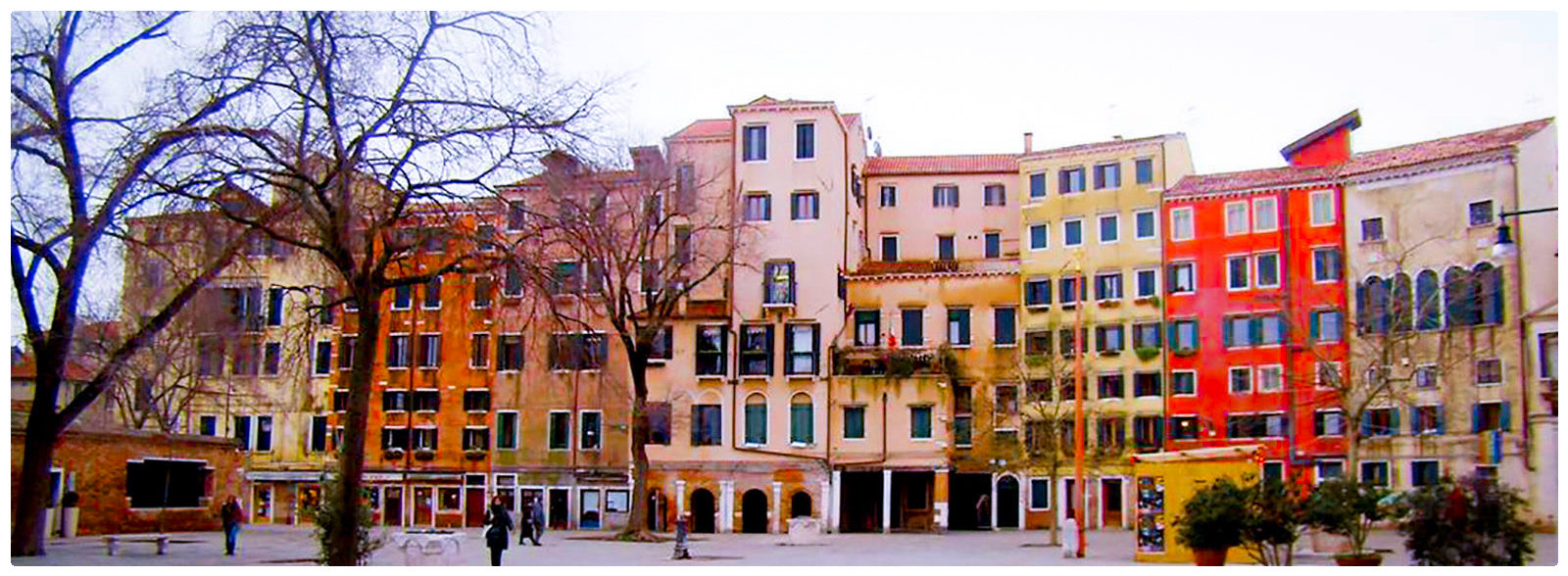
Venice has always been a cosmopolitan city. It has always welcomed and offered protection to all those who needed it, and has been able to host entire communities: among the most numerous settlements in the Serenissima, the Greek and Jewish ones. But it is the latter that has left an indelible mark on the city, which still today characterizes an entire area of the Sestiere di Cannaregio: the Jews hosted in Venice gave rise to what became the first Jewish ghetto in history, whose term is now in use in all languages.
Given the large number of Jews present in the city, at the beginning of the sixteenth century the Senate of the Republic issued a measure by which it assigned them an entire area of the city where they could reside. It was chosen the area of Cannaregio that overlooks the North Lagoon, previously occupied by several foundries, within which the cannons were made. And it is from the term "to throw" the cannons that the word "getto" came to the word "getto", which was then crippled in the ghetto by the Jews who pronounced the g in their own language in a rather harsh way. Another current of thought, instead, derives the term from the Talmudic "ghet" which indicates separation, which is precisely the present meaning of the word ghetto. This theory would not deviate much from the reality of the time, because while the Senate had been willing to offer a home to the newcomers, it dictated very strict rules to them in order to regulate their presence and the whole area: the ghetto had to be closed at sunset by heavy gates that were then reopened at dawn, during the night no Jews were allowed to leave their area and move freely in the rest of the city, all Jews were obliged to always wear a yellow cap to be easily identified and distinguished from the Venetians. Moreover, the only professions they were allowed to do were those of the doctor and usurer, forbidden to Christians for religious reasons: this practice gave origin to the loan banks, and the most famous was the Banco Rosso, still visible at number 2812 of the Campo del Ghetto Nuovo. The presence of numerous rules did not frighten the Jews, and thanks to their work the ghetto grew rapidly to the point of needing to expand. At first they were allowed to occupy the so-called "old foundries" area, distinct from that of the "new foundries". But soon the area became insufficient for a new expansion and, therefore, not being able to make it the width, so they thought well to do it in height: they were forced to add floor upon floor to their existing houses, arriving at very daring heights and very unusual for the Venetian context, until they were allowed to live also in other areas of the city. Still today, walking through the ghetto you will find the tallest palaces of the city, which can occupy even the 7 floors!
The heart of the ghetto is undoubtedly the Campo del Ghetto Nuovo, which is accessed by a magnificent cast iron bridge surrounded by two symmetrical red brick garrets, a symbol and reminder of forced isolation and surveillance. And then there is the Campo del Ghetto Vecchio, which has the particularity of being newer than the Campo del Ghetto Nuovo: this is because the first camp was built during the first settlement of the Jews, when they occupied only the area of the new foundries, and hence the name. When they later expanded to occupy the area of the old foundries, the Campo del Ghetto Vecchio was born, also inheriting the name from the foundries.
Today the whole area is a suggestive place of study and culture, populated by rabbis and followers of the Kabbalah, and visiting it will allow you to immerse yourself in an unusual atmosphere dominated by pigtails and kippa, jewish style objects, and marked by the sound of the litanies of the psalms that are daily recited in the five synagogues that are still present today called Schole: the German Schola Grande, the oldest, the Schola del Cantono, the Schola Italiana, the Schola Levantina and the Schola Spagnola, made even by Baldassarre Longhena, archistar of the Baroque style. An incredible sound, which like a background soundtrack will accompany and cheer up your walks.
Unthinkable a visit to the Ghetto without being immersed in their ancient culinary tradition, a fusion of different histories and peoples, Arabic, Spanish and German elements: it is the kosher cuisine, governed by the dictates of the Jewish religion. Eat the Jewish sweets, delicious delicacies and worthy conclusion of a pleasant walk.
The Campo of the Moors
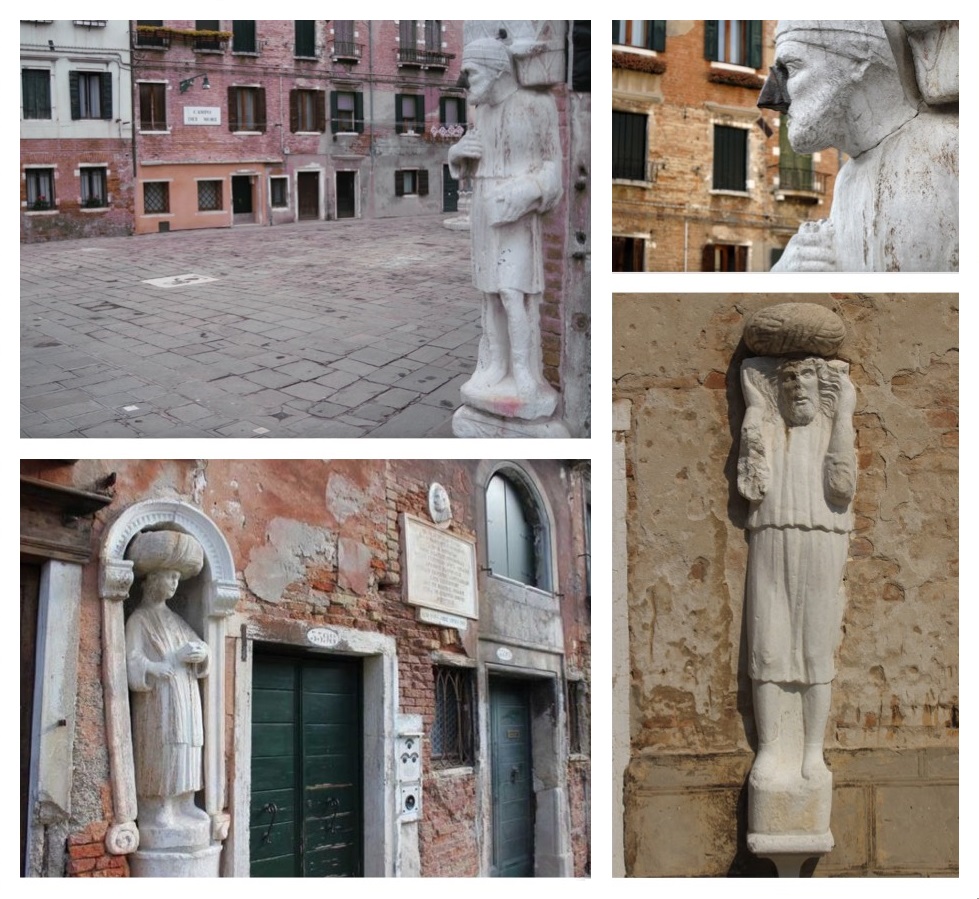
Leaving the Ghetto, getting lost with curiosity between calli and callette we reach the Campo dei Mori. One of the most famous in all of Venice, with its singular, almost triangular shape, this square is famous for the presence of the statues of the Moors, to which it owes its name. These are two sculptures in Istrian stone imprisoned in small niches in the Palazzo Mastelli del Cammello and which welcome the Campo when you enter from the bridge that crosses the Rio della Sensa. The presence of these three sculptural elements is linked to a singular legend that has its roots even in the early years of the year 1000! The Palace where the three statues are set, called the Camel because of the presence of a bas-relief of a camel on the facade, was built by the Mastelli family, who arrived in Venice in 1113 from the distant Morea, now Peloponnese, and for this reason called by the Venetians with the term "Moors". Besides the parents, the family was completed with 3 brothers: Rioba, Sandi and Alfani. They traded thirst and spices, a very precious commodity at the time and also in great demand. The 3 Mastelli brothers, however, were certainly not distinguished for their honesty, becoming known for their fraudulent conduct, having the habit of deceiving their customers to whom they were able to sell poor quality goods at very high prices. Having raised a real treasure with their dishonest business, the brothers also took over a bank. With this new business they managed to cheat a very religious old lady, who realized that she had been the victim of a fraud at the hands of the Mastelli, and begged St. Mary Magdalene, to whom she was very devoted, to put a curse on the 3 cheaters. The Saint then presented herself to her brothers in the guise of a human lady interested in their thirst, and they answered her with the words "May the Lord turn us into stone if this is not the best cloth in Venice". Fatidiche were the words and the last attempt at cheating: from that day on, the 3 brothers, together with one of their servants whose name remained unknown, were turned into stone and placed as an ornament of the Palace where they lived. During the nineteenth century the stature of Rioba, the most famous because it is the first one you meet after crossing the bridge and because a satirical newspaper called "The shadow of the Sior Antonio Rioba" was even dedicated to it, lost in mysterious circumstances its aquiline nose, quickly replaced with a metal one: from here was born the second legend linked to the Moors, which foresees luck in life if you can rub the metal nose of Rioba.
Try to believe!
Jacopo Tintoretto's house
.jpg)
Shortly after the palace in which the Moors are imprisoned, along the Fondamenta of the same name, at number 3399 stands a delightful red building dressed in full Venetian Gothic style: it is the home of Jacopo Tintoretto. Rather high as a palace with its 4 levels, simple but at the same time accurate in details, it is characterized mainly by two elements: the delightful three-light window on the main floor with pointed arches enclosed in a cordon frame, and the bas-relief of Hercules leaning on a club. The presence of this small work has its explanation in a very ancient legend that sees Marietta, the artist's daughter, as the protagonist. The young girl went to the Church of the Madonna dell'Orto every morning, as was the custom of the time, to receive communion. One morning she met an old lady who revealed to her the quickest way to become "like the Madonna", that is to keep the hosts in a secret place instead of swallowing them. On the tenth day she would then have a revelation. Marietta accepted and began to store the wafers in the garden of the house, just behind the watering trough of the animals, which began to gather abnormally around that point in the garden. Tintoretto, intrigued by this behaviour, asked his daughter for explanations and she finally confessed her secret. The artist knew this magical practice used by witches to steal the soul of young girls and devised a plan to get rid of the old woman. He asked Marietta to wait for her at the window and invite her in. At that point her father hit her with a stick and the witch, throwing an inhuman scream, turned into a cat and wrapped in a black cloud, came out of the house from the outside wall, leaving a huge hole. Tintoretto, in order to avoid an unpleasant return, had that hole walled up with the statue of Hercules, to guard his house and to remember the episode.
In this Tintoretto was born on an uncertain date, but it seems it was 1518 and lived there until his death in 1594. His real name was Jacopo Robusti and Tintoretto's nickname was inherited from his father, Battista Robusti, a fabric dyer.
In the nineteenth century, he who lived in the house at that time, had a plaque affixed so that everyone would know that those walls had been silent witnesses to the work of a great artist who started out from that Fondamenta and conquered the whole world: "He does not ignore, wayfarer, the ancient house of Jacopo Tintoretto. From here innumerable paintings, admirable both publicly and privately, masterfully made with fine ingenuity by his brush, spread from every one of them. You will be pleased to learn this, for the diligence of the present owner."
The Church of Madonna dell'Orto
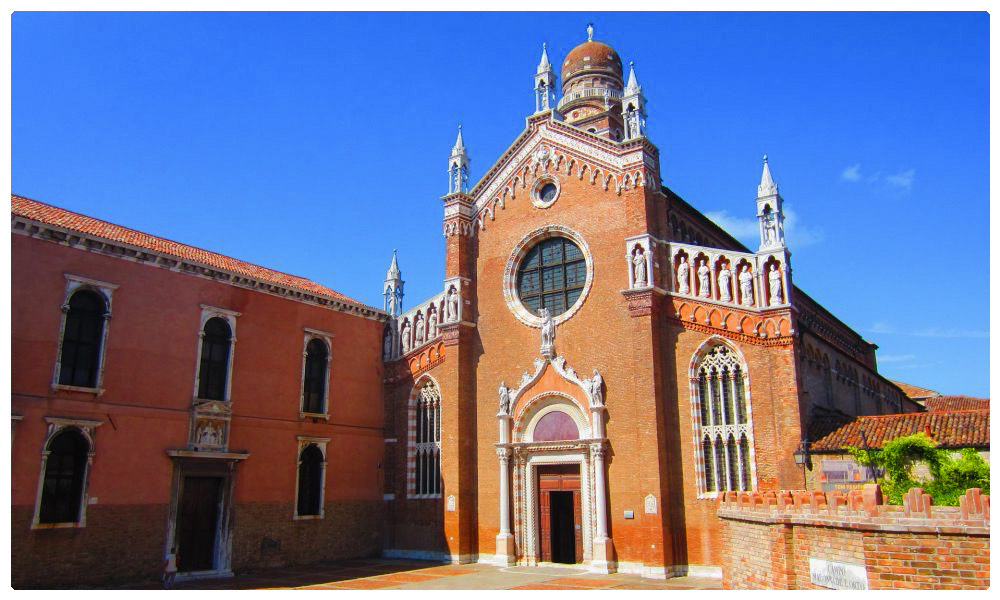
Crossing the Campo dei Mori the Sestiere of Cannaregio gives us a truly incredible scenic surprise: from a narrow space enclosed by tall palaces suddenly opens to our eyes one of the most cult buildings in Venice, the Church of the Madonna dell'Orto, which is accessed by crossing a simple stone bridge. The visual impact is magnificent, exciting because the Church reveals itself in all its imposing bulk, with its red mantle that seems to be there waiting for us.
To attract our attention is certainly the majestic facade that rises from a small field of small size characterized by a terracotta flooring, a rare example in the city, a perfect synthesis of the transition from Romanesque to Gothic and Renaissance style. It is divided into 3 distinct partitions, which anticipate what will be the division of the interior space: two large pilasters enclose the highest central part in which a large rose window opens to allow daylight to pass inside, and the main entrance door, by Bartolomeo Bon, richly decorated with two side columns supporting the statues of the Madonna, created by Antonio Rizzo and the Archangel Gabriel, and an ogival arch on the tip of which stands the figure of St. Christopher, together with the Archangel, the fruit of the chisels of Niccolò di Giovanni Fiorentino. The whole closed with a sloping course, enriched like a Burano lace by small and delightful hanging arches, and three imposing kiosks in Gothic style, which amplify the feeling of verticality, almost as if you wanted to touch the sky: these, along with those of the side wings preserve the statues of Prudence, Charity, Faith, Hope and Temperance, arrived from the demolished Church of Santo Stefano in Murano.
The two side parts, lower, are characterized in the first part by large windows with Gothic arch and in the upper part by a series of niches where the statues of the 12 Apostles are kept.
The interior divided into 3 naves has a rectangular planimetric layout, without the transept, dominated by the wooden coffered ceiling and the splendid polychrome flooring with geometric designs: the two elements create a perfect balance of art and architecture. The space closes at the back with the presbytery and the pentagonal apse. In the four lateral funerary chapels, the Church preserves the remains of four important noble families of the Serenissima: the Valier, the Vendramin, the Morosini and the Contarini.
But the fame of the Church is undoubtedly linked to the name of Jacopo Tintoretto who lived not far from it: here the artist left as many as 10 splendid works and even "himself", resting his immortal remains in the left chapel of the apse.
Together with the Church, a splendid cloister was built, later rebuilt by the Canons Regular of San Giorgio in Alga, in an exquisite late Gothic style. A monochromatic painting of red bricks on which the white marble columns supporting ogival arches are the protagonists, creating a portico that runs along 3 sides and closes with a sloping roof. In the middle of the floor, also made of purple bricks, is a splendid well well made of Istrian stone with a cylindrical shape and square frame below. Today the Cloister, which can be visited, is used as an exhibition space for the Venice Biennale.
But why does this splendid cult building have such a unique name, Madonna del'Orto? The explanation lies in the history of its construction, which moves between reality and legend.
The construction of the Church was commissioned by the Congregation of the Humiliated around the middle of the fourteenth century who dedicated it to God, the Blessed Virgin and St. Christopher. At the same time the parish priest of the Church of Santa Maria Formosa commissioned the Venetian sculptor Giovanni De Santi to create a statue of the Madonna. The parish priest, however, rejected the work and then the artist kept it for himself and placed it in the garden of his home. The statue thus began to give off strange flashes and soon became a pilgrimage destination for the Venetian faithful and not that screamed at the miracle. To avoid manifestations of inadequate religious fanaticism, the parish priest of San Pietro di Castello advised the sculptor to place the statue inside a church. Al De Santi then came up with the idea of addressing the friars of the nascent church of Cannaregio and asked them to welcome the statue. But he established 3 conditions to be repaid for the gift he made: a large sum of money, to be buried in the same house as the statue and that a mass in his honour would be recited forever. Clever De Santi! In any case the friars accepted the pact, but not having sufficient means, the money was paid by the School of St. Christopher and the statue of Our Lady was placed in the new church. In 1414 the Council of Ten granted the use of the term Madonna dell'Orto.
Donà delle Rose Palace
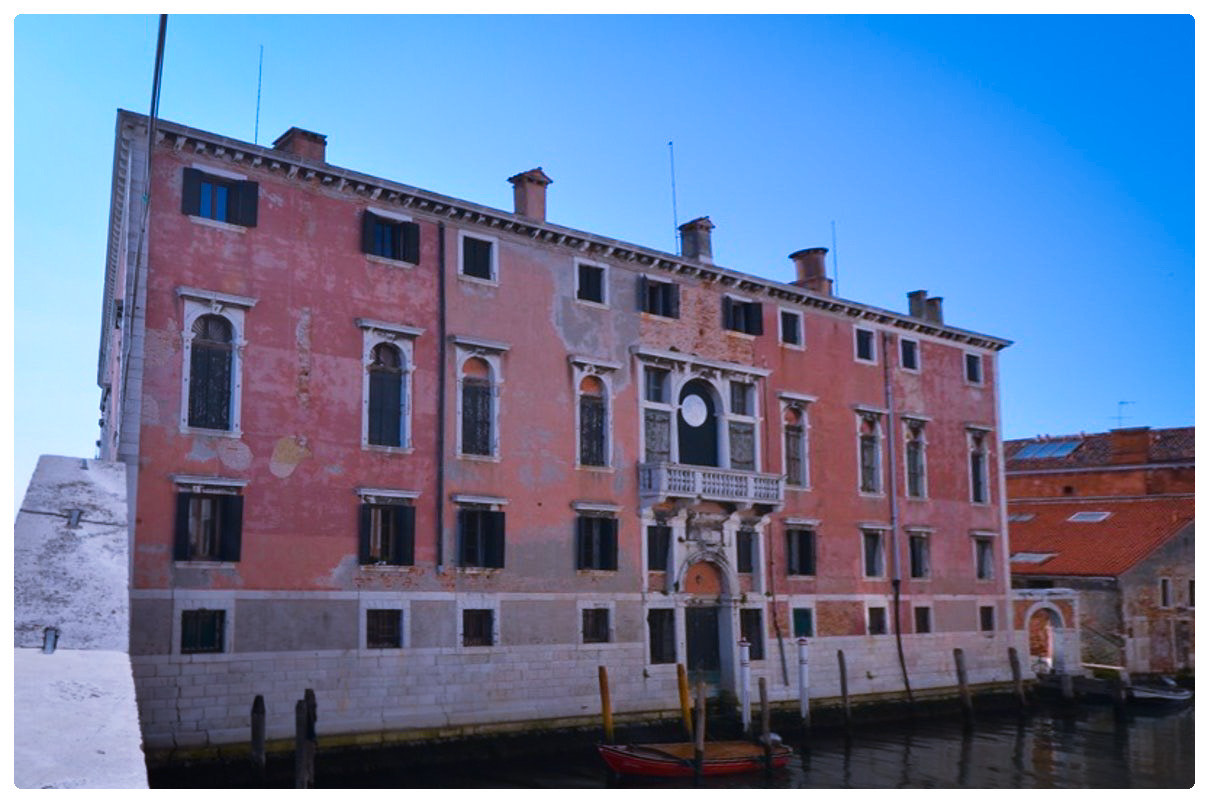
The Sestiere di Cannaregio, however, is not only known and emblazoned architecture, but very often also small hidden treasures completely detached from the usual tourist routes beaten by all. This is the case of Donà delle Rose Palace.
Situated in Fondamenta Nove, the palace has a truly singular but extremely interesting history: it was built in 1600 at the behest of the Doge Leonardo Donà delle Rose who commissioned a palace with simple lines and austere design, devoid of any decoration, declaring his firm will "no architecture for the Doge's house". In reality, others see the explanation for this in the fact that Leonardo commissioned the project from the jurist friar Paolo Sarpi, a brotherly friend but a very inexperienced architect and lacking any technical-artistic skills to create a building worthy of being remembered.
Moreover, the Palace was also located in a rather isolated position, in the northernmost part of the city, a recently built area where foundries used to be built, outside the living dynamics of the Republic and the worldly life of the Serenissima nobility: was Leonardo's choice bizarre or well thought-out?
Today what presents itself to our eyes is a corner palace, with two splendid facades, one on Fondamenta Nove and one on the Rio dei Gesuiti. Both are characterized by extreme simplicity, lines almost resigned, have as their only exalting element the serliana of the main floor, which manages to give a pleasant chromatic and formal detachment with the surface plastered in the typical Venetian red that is the background.
Much more captivating is the interior, with the splendid atrium and the portego on the ground floor, dominated by the magnificent marble floor, and the main floor with its portego on which all the other private rooms of the residence open out: here the opulence of the Baroque style triumphs, a clear sign of a remake that saw the Palazzo between the eighteenth and nineteenth centuries.
It seems that these rooms even saw the presence of Galielo Galiei, of him Leonardo became a brotherly friend: the Doge was, in fact, one of the first to use his friend's telescope and given its effectiveness he authorized its production throughout the Republic.
In recent times Palazzo Donà delle Rose, which still belongs to the family of the same name, was the protagonist of the TV series The New Pope by Paolo Sorrentino, who chose to shoot some scenes in these magnificent settings, which have seen stars of international appeal such as Jude Law and John Malkovich.
Fondamenta Ormesini and Fondamenta della Misericordia
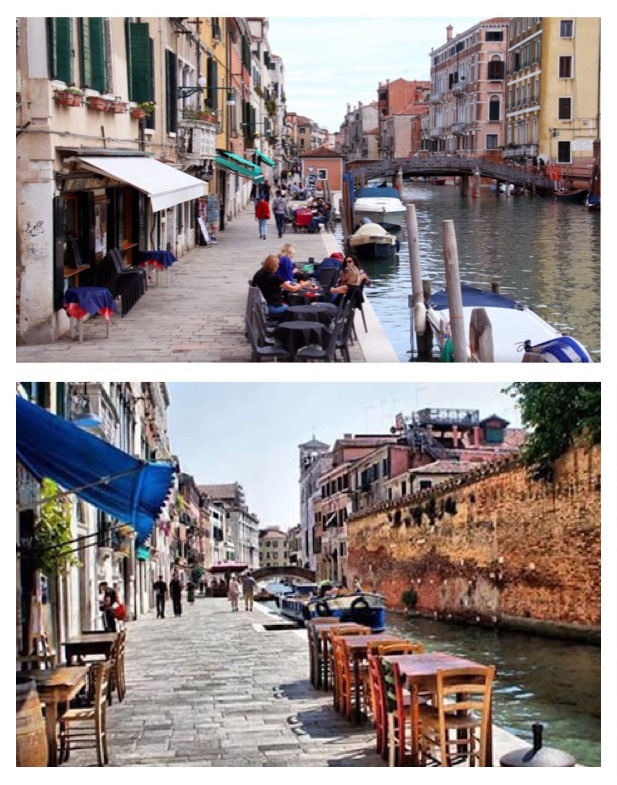
Okay, we've been walking a lot, and it's time to take a break. And in Venice you write pause and read spritz+cicchetti! So, with our minds and hearts full of all the wonders we have enjoyed, let's dive into the most mundane, lively and cheerful part of the Sestiere di Cannaregio and let us also enjoy the taste. Fondamenta Ormesini and Fondamenta della Misericordia, united by the sotoportego of the Aseo Bridge, are the beating heart of this Sestiere. Fondamenta Ormesini owes its name to the ormesin, a silk fabric used to make drapes, imported from Ormus, in the Persian Gulf and then became very popular with the Serenissima: it was here that foreigners came from far away to trade their silks. Fondamenta della Misericordia, instead, is so called because of the presence of the nearby Abbey of Mercy.
This is one of the most authentic areas of Venice, one of the favourite evening hangouts of Venetians, especially for the presence of bacari and restaurants of all kinds, such as exotic ones, and clubs with live music, such as jazz: a fun, frizzy and freaky area! During the day, however, the area is really very quiet, and will allow you to immerse yourself in the truest Venetian atmospheres, those where the sound of water mixes with the sound of your footsteps and the voices of Venetians walking through the calli. Populated by simple houses and stately mansions, you will be submerged by continuous visual contradictions: a row of cloths lying on the right, a refined decoration on a facade on the left, a populated place and a quiet and secluded corte sconta (courtyard). On the other hand, Venice is also this, it is the city made of land and water, of nobility and people, of art and simple everyday life: a wonderful mix of contradictions that reveal themselves just by turning the corner, to surprise and excite us like few others!
Stefania Colecchia, your guide to best visit Venice
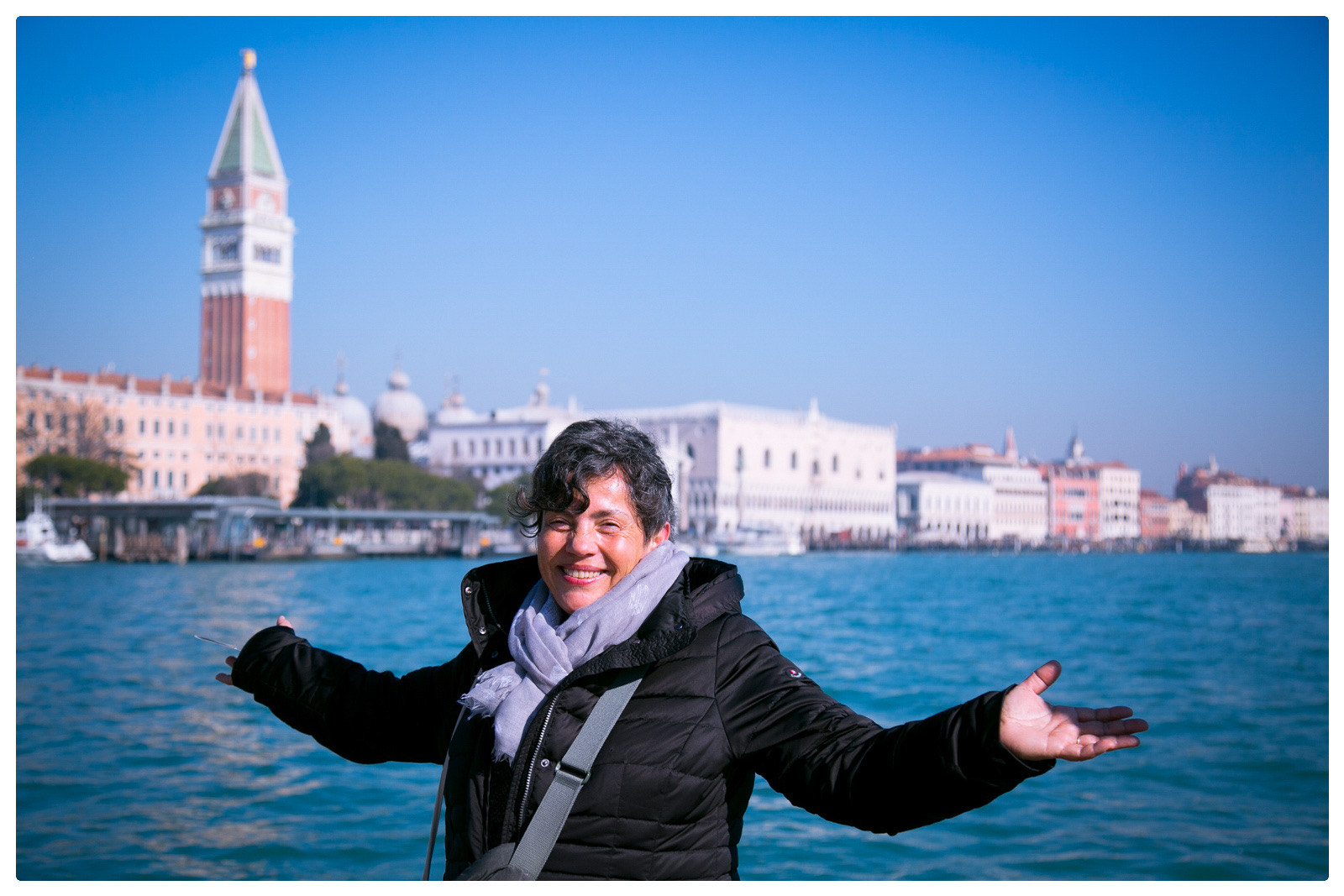
It's not easy to untangle for a complex city like Venice: it's not easy to have orientation in its intricate maze of calle and callette, and often much of the time you have available is wasted reading a map, looking for directions on a smartphone screen. In the end, you risk missing places and moments, wonders hidden even from the most famous search engines. The best thing is to be guided by those who know Venice well and who put their knowledge at our disposal, so that we can immerse ourselves in the city in the right way, and allow us to take home the most beautiful postcards, those printed in our fondest memories.
Stefania Colecchia is your best choice! Born in Mestre, she has been a local guide in Italian, English and Russian for more than twenty years. Member of the Best Venice Guides Association, in 2019 she obtained the European certification of T-Guide (Tourist Guides for people with Intellectual & learning difficulties) thanks to the organizational support of ENAT (European Network for Accessible Tourism) and FEG (European Federation of Tourist Guides Association).
Graduated in Russian at Ca' Foscari, she soon felt that her heart was beating for Venice and its wonders. So she studied and worked hard to make herself available to her city and to make known the soul of this magical place, far from the usual bite and runaway tourism, all made of tourist menus and selfie for Instagram!
Stefania's invitation is to "live this city with the eyes of its inhabitants who love it so much and would like it to remain a city, not a theatrical backdrop" and this is possible only by touching the soul of the city, coming into contact and talking to the Venetians, asking for information, stories, anecdotes and curiosities: Stefania will be ready to satisfy you and satisfy your requests, with passion and competence, making you know an unusual and hidden city, authentic and true.
Stefania puts at your disposal different types of itineraries, for every need and for every taste: from the water taxi to admire that part of the city that would otherwise be impossible to observe, from the outdoor one around Sestieri, campi and callette, to the indoor one with a visit to museums, churches and palaces, to the one that will allow you to get to know the most emblematic figures of the city that with their craftsmanship have participated in the birth of the myth of Venice and preserved its glory over the centuries. Even in Stefania's companion you can also plan a culinary tour that will introduce you to the secrets of Venetian cuisine, or a musical, literary and cinematographic itinerary, up to night walks to discover the most silent and mysterious Venice, or make special tours organized according to your wishes.
Each itinerary takes about 2 hours, but you can also agree with Stefania for a longer time.
Finally, with Stefania you can plan tours with people suffering from autism, Down's syndrome or other cognitive or intellectual disabilities.
Touring Venice with Stefania is the best way to visit the city: it will be an experience you will not forget!










Lascia un commento